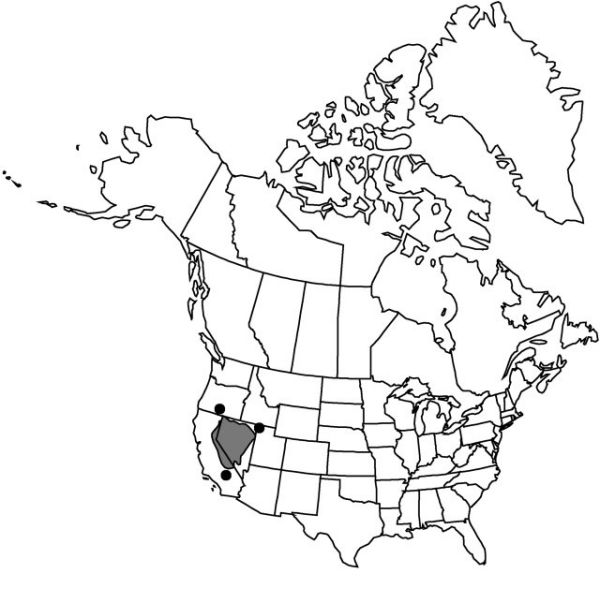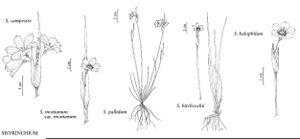Sisyrinchium halophilum
Pittonia 4: 34. 1899.
Herbs, perennial, cespitose, green to ashy olive when dry, to 2.6 dm, often strongly glaucous; rhizomes scarcely discernable. Stems simple, 0.5–3 mm wide, glabrous, margins entire, similar in color and texture to stem body. Leaf-blades glabrous, bases not persistent in fibrous tufts. Inflorescences borne singly; spathes usually green, glabrous, keels entire; outer 13–27 mm, equaling or 3 mm longer than inner, tapering evenly towards apex, margins basally connate 2.7–5.5 mm; inner with keel evenly curved to straight, hyaline margins 0.40.6 mm wide, apex broadly rounded or truncate, often erose, often extending as 2 lobes beyond green apex. Flowers: tepals light to dark bluish violet, bases yellow; outer tepals 9–12 mm, apex truncate, aristate; filaments connate ± entirely, stipitate-glandular basally; ovary similar in color to foliage. Capsules beige, ± globose, 2.2–4 mm; pedicel erect. Seeds globose to obconic, lacking obvious depression, 1–1.7 mm, rugulose. 2n = 32.
Phenology: Flowering spring–summer.
Habitat: Moist, grassy areas, stream banks, springs, meadows, especially in alkaline soil
Elevation: 1100–2600 m
Distribution

Calif., Nev., Oreg., Utah.
Discussion
Sisyrinchium halophilum is the most common species of the genus in Nevada and eastern California.
Selected References
None.
